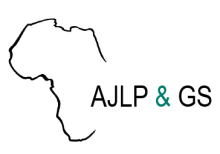Resource information
Context and background As a result of advancement in Technology, the densification of Survey Control Points (SCP) has become very easy. There has been some Survey Control Points (SCP) that were established within the Federal University of Technology Akure (FUTA) campus, Ondo state, Nigeria with no intention for database storage.Goal and Objectives: This study aimed at mapping of control points distribution within the University community. The objectives include to identify and re-coordinate all existing control points in the study area, compare the result statistically and create a database in a mobile application environment.Methodology: Ground survey and Geographic Information System (GIS) methods were adopted in the study. All existing Survey Control Points (SCP) within the study area were re-coordinated with the use of South Differential Global Positioning system (DGPS) in static mode with minimum of thirty-minutes observation per station. The observed data were downloaded and processed using South GPS Processor, AutoCAD 16 and ArcGIS 10.3.1 software. Student’s T-test was used in comparing some existing and the observed coordinates. The coordinates (Northings, Easting and Height), images of Survey Control Points (SCP) location, number and nearest identifying feature gotten from the ArcGIS environment were used in building the mobile application. Also, in the process of developing the mobile application, the following programming languages were used; JavaScript, HTML, CSS and Bootstrap. Notepad++ was used in compiling the codes while IntelXDK platform was used in building, testing and debugging the mobile application.Results: The result reveals that the control points are evenly distributed within the study area. It has also contributed to the quality of geospatial data in the University environment, eliminate duplication of efforts, and provide an effective and efficient means of data accessibility through the creation of a mobile application database. The developed mobile application database is hereby recommended for adoption and update by the Department of Surveying and Geoinformatics, FUTA.


